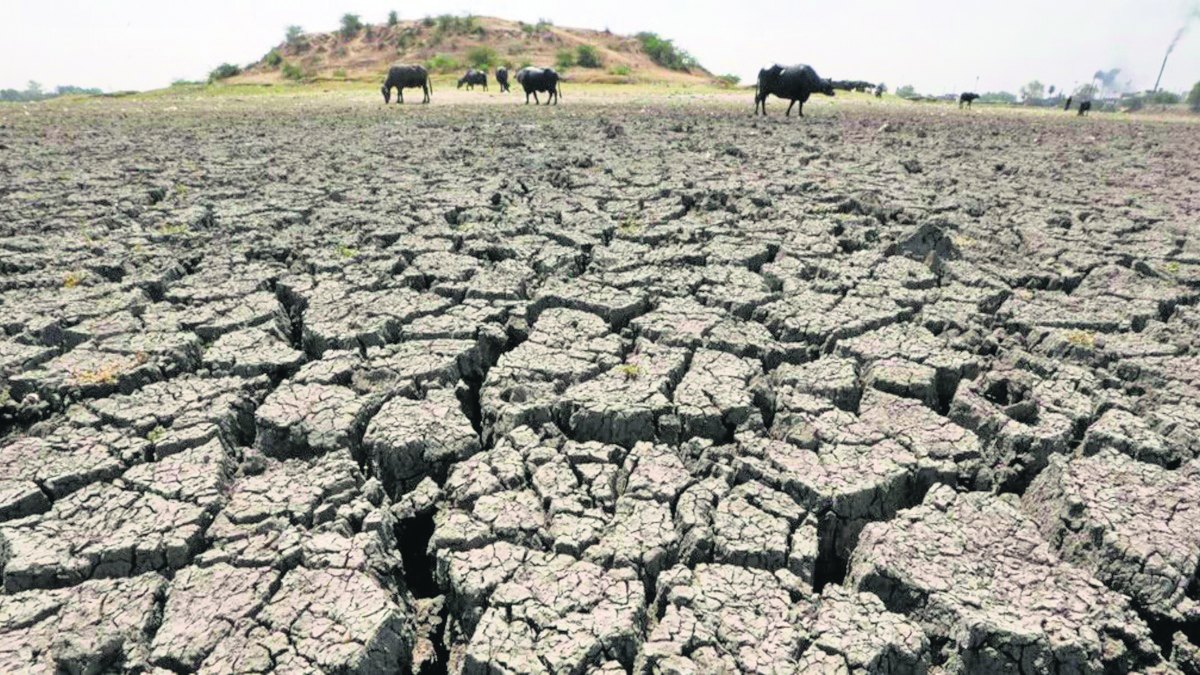


The depleting groundwater level in Haryana has always been a matter of serious concern. The continued exploitation of underground water resources is sure to cause a crisis for future generations. More than 60 percent of the blocks in the state have entered the dark zone, forcing the government to launch new schemes for groundwater conservation. Despite these efforts, the situation is worsening.
Following the directions and proposals of the state government, the Haryana Water Resources Authority (HWRA) divided the villages of the state into seven zones: Severely Groundwater Stressed Villages as Red, Moderately Groundwater Stressed Villages as Pink, Potential Groundwater Potential Villages as Light Green, Good Groundwater Potential Villages as Green, Buffer Zone for waterlogging villages as Yellow, Potential Waterlogged Villages as Purple, and Severely Waterlogged Villages as Blue, based on the depth of the groundwater level.
Based on statistics, out of the total 7287 villages in the state, the Haryana Water Resources (Conservation, Regulation, and Management) Authority has placed 1948 villages in the Red zone, terming them as severely groundwater stressed villages, comprising 27 percent of the total villages. Additionally, 1,093 villages have been placed in the Pink zone category, comprising 15 percent of total villages, as they were found in the groundwater stressed category. Thus, a total of 3041 villages in the Red and Pink zone, facing serious water issues, constitute around 42 percent of the total villages—an alarming situation. An acute shortage of drinking water and water for farming continues to witness a spurt, adding to the woes of the state government and HSWA, making both the government and the common people come up with foolproof strategies in this direction.
However, as many as 1903 villages have been placed in the Potential Groundwater Stressed villages category, comprising 26 percent of the total villages. Additionally, 1304 villages, comprising just around 18 percent of the total villages, have been found in the classification of ‘Good Groundwater Potential Villages.’ Thus, the worsening situation necessitates raising awareness among the local population and drawing the attention of the state government to formulate policies to tide over the crisis.
Apart from an acute shortage of water resources, a large part of the geographical area of the state faces the dual problem of waterlogging and salinity. In this series, the areas facing these problems have been divided into three categories. As many as 680 villages in the state have been placed in the Yellow Zone, indicating a widespread problem of waterlogging. Additionally, 333 and 88 villages have been placed in the Purple and Blue zones. Therefore, 1039 villages in the state, which is more than 14 percent of the total villages, are facing the problem of waterlogging. Notably, reclamation work on waterlogging and saline soils in Haryana started in 1996, under which only 28,100 acres of land were reclaimed in 24 years. Subsurface and vertical drainage have already been reclaimed through techniques, and the remaining work is in progress.
In the wake of the gravity of the situation, questions arise pertaining to the factors responsible for the depleting water level in Haryana. The cultivation of the paddy crop emerges as the main reason for the declining water level in Haryana, requiring the state government to consider every possible substitute for the crop. Paddy cultivation, especially through transplantation, results in high water consumption. According to an estimate, about 15 lakh liters of water are used to cultivate paddy in one hectare. Paddy is extensively cultivated in Haryana, currently producing about 68 lakh metric tonnes of paddy and 25 lakh metric tonnes of Basmati. In light of the shortage of water resources, the government is also trying to ensure that farmers do not transplant paddy but instead practice direct sowing.
Notably, water has reached the lowest level in 14 districts of Haryana—Ambala, Bhiwani, Rewari, Mahendragarh, Sirsa, Sonipat, Panipat, Karnal, Kurukshetra, Kaithal, Hisar, Jhajjar, and Jind.
The government is striving to ensure that farmers in these districts either sow paddy directly or cultivate other crops instead of paddy. Looking at the current circumstances, it is clear that future generations will face problems regarding water resources.
